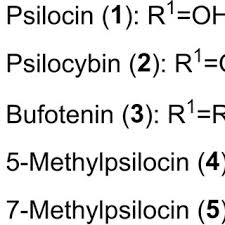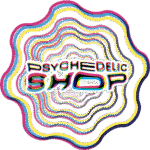Blog
Natural vs Synthetic Tryptamines: Key Differences

Natural vs Synthetic Tryptamines. The key differences between natural and synthetic tryptamines lie in their origin, structure, potency, legality, and safety profile. Here’s a breakdown of the major distinctions:
🔬 1. Origin
| Type | Source |
|---|---|
| Natural | Found in nature (plants, fungi, animals) |
| Synthetic | Man-made in laboratories |
Examples:
- Natural: Psilocybin (from mushrooms), DMT (in plants like Psychotria viridis), 5-MeO-DMT (from toad venom)
- Synthetic: 4-AcO-DMT, DPT, DiPT, 5-MeO-MiPT
🧪 2. Chemical Structure – Natural vs Synthetic Tryptamines
- All tryptamines share a tryptamine backbone (indole ring + ethylamine chain), but:
- Natural tryptamines typically have simple modifications (e.g., a phosphate group in psilocybin).
- Synthetic tryptamines are often highly modified to change potency, duration, or effects.
⚡ 3. Potency & Effects
| Type | General Potency & Experience |
|---|---|
| Natural | Often less potent or shorter-acting |
| Synthetic | Can be more potent or long-lasting |
- Natural DMT: intense but short-lived (5–15 minutes when smoked)
- Synthetic 4-AcO-DMT: orally active and longer-lasting (4–6 hours)
Note: Effects vary widely across substances and individuals.
🛡️ 4. Safety Profile – Natural vs Synthetic Tryptamines
| Type | Known Risks |
|---|---|
| Natural | More historical use, generally safer if pure |
| Synthetic | Less-studied; some may have unknown risks |
- Natural compounds often have a longer history of traditional or ceremonial use.
- Synthetic tryptamines can be more unpredictable due to novel pharmacology or lack of long-term data.
⚖️ 5. Legal Status
| Type | Legal Considerations |
|---|---|
| Natural | Often controlled due to active compounds |
| Synthetic | Typically illegal under analog or substance laws |
- Many natural tryptamines (like DMT and psilocybin) are Schedule I in the U.S.
- Synthetic tryptamines are often unscheduled, but fall under analogue acts or local bans.
🧭 6. Use & Context
| Type | Common Use Context |
|---|---|
| Natural | Traditional/entheogenic use |
| Synthetic | Research, recreational, or novel experience |
Summary Table – Natural vs Synthetic Tryptamines
| Feature | Natural Tryptamines | Synthetic Tryptamines |
|---|---|---|
| Source | Nature (plants, animals) | Laboratory-made |
| Examples | DMT, psilocybin, 5-MeO-DMT | 4-AcO-DMT, DiPT, MiPT |
| History | Longstanding traditional use | Newer, often experimental |
| Potency | Usually milder/shorter acting | Can be highly potent or long |
| Legal Status | Often illegal, but some exceptions | Frequently unscheduled or banned |
| Safety | Better known risks | Less-studied, some uncertainty |










